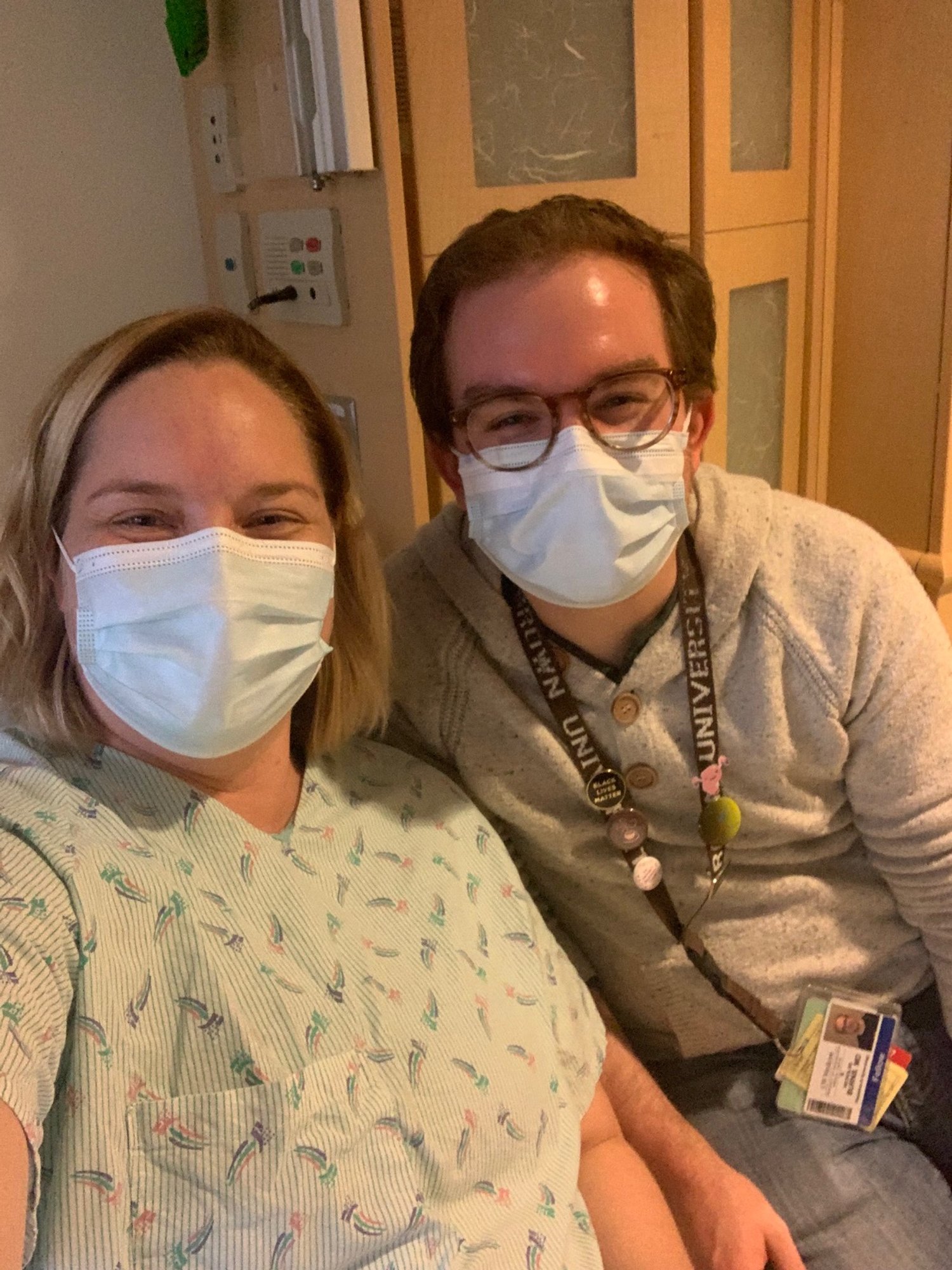Post-Term Pregnancy
/What is “post-term”?
Recall the ACOG language surrounding pregnancy term status:
24-27’6 weeks: extremely preterm
28-33’6 weeks: preterm
34-36’6 weeks: late preterm
37-38’6 weeks: early term
39-40’6 weeks: term
41-41’6 weeks: late-term
42’0 and beyond: post-term
Birth certificate data in the US indicate:
About 5% of births happen at 41 weeks and beyond
About 0.25% of births happen at 42 weeks and beyond
Largely a consequence of how we manage that today - since we tend to induce folks before they get there in many systems.
Risk factors for a patient being post-term include:
Nulliparous
Obesity
AMA
Personal history of post-term births in prior pregnancies
Male fetus (interesting)
Certain fetal conditions that likely interrupt signaling for parturition – i.e., anencephaly, placental sulfatase deficiency/X-linked ichthyosis
What’s the problem with post-term pregnancies?
Think of the fetus “overstaying its welcome.” There are multiple consequences:
Macrosomia
2.5-10% of post-term pregnancies have weights >4500g (vs only 1% at term)
“Dysmaturity”
Sign of chronic intrauterine malnutrition likely resulting from relative oligohydramnios, cord compression, meconium passage
Physical signs are what we think of for post-term pregnancies:
“Parchment-like” skin – less vernix, skin peeling, feels thin
Meconium staining of amniotic fluid and skin; increased risk of meconium aspiration
Long, thin bodies and long fingernails
Hypoglycemia
Polycythemia
Increased risk of perinatal morbidity/mortality
Fetuses born after 42 weeks have higher rates of NICU admission, seizures, meconium aspiration, and 5-minute Apgars under 4.
Oligohydramnios rates go up the longer pregnancy goes, predisposing to risks associated with oligohydramnios.
Remember, because of stillbirth risk, in isolation delivery for oligo is recommended anytime after 36 weeks!
Infants born at 41 weeks or greater also have about a one-third higher risk of perinatal death versus those born at term gestation.
This risk increases to:
2x greater risk at 42 weeks;
4x greater risk at 43 weeks; and
5-7x at 44+ weeks.
Importantly, while these relative risks are quite high, it should also be stated the absolute risk is low:
The stillbirth risk at 40 weeks is less than 1 per 1,000 ongoing pregnancies.
At 41-42 weeks, this increases to 1.2 - 1.3 / 1000.
At 42-43 weeks, 1.3 - 1.9 / 1000.
At 43-44 weeks, 1.5 - 6 / 1000.
There are also maternal risks to ongoing pregnancy:
A large observational study has suggested increased rates of many major OB morbidities, including:
Higher order laceration
Postpartum hemorrhage
Infection
Cesarean delivery
How do I manage a post-term pregnancy?
One really important thing to always confirm (and a limitation to some of the data we’ve described) is accurate pregnancy dating.
Check out our previous episode!
Some studies have shown that the incidence of post-term pregnancy was reduced from 9.5% to 1.5% when switching from LMP to ultrasound-based dating – underscoring the importance of early ultrasound!
This may ultimately help to decrease unnecessary intervention, whether that be for post-dates, incorrectly calling a fetus FGR, or delivering out of concern for macrosomia, amongst other issues.
Membrane sweeping gets mention in this practice bulletin!
Using a finger to “stir up” around the membranes at the internal os, releasing endogenous prostaglandins.
Cochrane review demonstrates it reduces incidence of pregnancies progressing past 41 weeks.
Use after a shared decision-making process with your patient.
Can be uncomfortable and cause some bleeding.
Fetal surveillance
ACOG recommends doing something for pregnancies progressing past 41 weeks, but stops short of making an outright specific recommendation.
This is because there are insufficient data comparing approaches for antenatal testing, and whether one reduces stillbirth risk better than another.
While ACOG does recommend antenatal testing, they also admit there are no RCTs demonstrating that fetal surveillance decreases perinatal morbidity or mortality.
The benefit is presumed in capturing and reducing risk where we can (i.e., finding oligohydramnios).
Some options (might bring you back a bit to our antepartum testing episode — or use that as a refresher!).:
Biophysical profile (BPP) or modified BPP
A small RCT has not demonstrated any difference between the two in neonatal outcomes when used in pregnancies beyond 42 weeks.
Advantageous in that you are getting NST as well as a fluid assessment to check for oligo.
One of the better, less invasive tests for negative predictive value of stillbirth.
For fluid assessment, deepest vertical pocket has been demonstrated to reduce unnecessary intervention without increasing adverse outcomes for fetuses.
NST alone
More convenient to do and does not require ultrasound.
Weekly or twice-weekly acceptable
Twice-weekly may be better based on some small studies, but data are insufficient – again, given the overall rare absolute outcomes of stillbirth or neonatal morbidity, these studies are difficult to adequately power.
Labor considerations
ACOG doesn’t provide any specific recommendations regarding labor management in this population, aside from one group: TOLAC.
There does not appear to be increased uterine rupture rates when advancing beyond 41 weeks, but
Failure of TOLAC risk increases – from 22.2% before 40 weeks, to 35.4% after 41 weeks.
This can be a conundrum – especially because of data suggesting increased success with spontaneous labor (which isn’t guaranteed!) versus a slightly increased risk of rupture with induction (remember that episode on TOLAC?).
Working through a shared decision making process and being aware of all of the risks can help your patients make the right decision for them.
How long can I let it go?
ACOG says that induction at 41’0 “can be considered” based on the limited evidence of increasing risk at/beyond this gestational age.
If advancing beyond 41’0, some sort of antenatal testing should be performed.
ACOG definitively recommends delivery at 42’0 and beyond, definitely by 42’6, due to the risks of morbidity/mortality.




